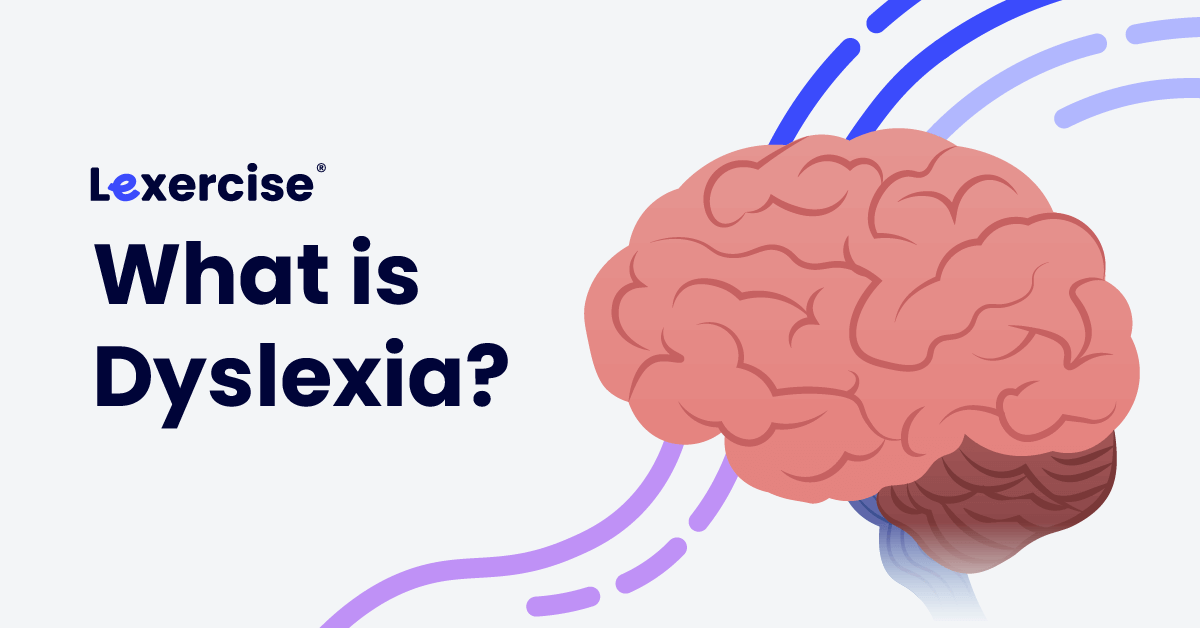What is Dyslexia? Understanding a Common Learning Difference
Written by Sandie Barrie Blackley, Speech-Language Pathologist
Published on October 21, 2025

For many people, reading and writing skills seem to develop naturally, without much effort. But for others, developing these fundamental skills is a process laced with anxiety and frustration. This is often due to dyslexia, a term frequently heard but often misunderstood.
Dyslexia is a learning disability that primarily affects word identification, spelling, and writing. It is considered a language-based learning disability because it stems from difficulties in how the brain processes language elements, such as speech sounds and letters.
Dyslexia is common, impacting as many as 1 in 5 people. It’s a lifelong condition that can cause difficulties with schooling, employment, mental and physical health, and other aspects of well-being. Fortunately, the negative impacts of dyslexia can often be overcome through early, science-backed interventions.
How Dyslexia Develops in the Brain
To understand dyslexia, it helps to understand how the human brain learns to read. Reading and writing develop using brain pathways previously established for listening and speaking. People with dyslexia typically have solid listening and speaking skills, but they typically have a weakness in an oral language sub-skill that involves speech sound (phonological) awareness.
 Source: Pexels
Source: Pexels
For example, a person with dyslexia who has weak speech sound awareness may struggle to identify the first and/or last speech sounds in spoken words. When asked to pronounce the first sound in clock, they may struggle to pronounce a single speech sound and instead produce several sounds together (e.g., “klah” instead of “k”). If prompted to say the word stick without a “t” sound, they may struggle to say the word sick. While their speech may be completely normal, their speech sounds awareness is weak.
Students with weak speech sound awareness often struggle with connecting letters and speech sounds (phonics). While a non-dyslexic brain might effortlessly connect the sound “b” with the letter -b-, a dyslexic brain has to work much harder to make that connection quickly and consistently.
Is Dyslexia a Vision Problem?
No. A persistent myth surrounding dyslexia is that it’s a vision-based problem, causing letters to appear backwards, mixed up, or moving. This common misconception has been widely debunked by scientific research. Like anyone else, a person with dyslexia can have vision issues, but vision issues don’t cause dyslexia. Rather, dyslexia is rooted in how the brain processes sounds and letters. People with dyslexia may have difficulty reversing letters, such as -b- for -d-, but this is related to problems with letter-sound processing, not vision. Focusing on vision-based methods can delay effective, language-based treatments.
What are the Symptoms of Dyslexia?
 Source: Pexels
Source: Pexels
Recognizing early signs of dyslexia is crucial for timely and effective intervention.
Speech Sound Awareness Difficulties
Also known as phonological or phonemic awareness, speech sound awareness is foundational for reading and writing, and difficulties in these areas are a hallmark of dyslexia. For example:
- Difficulty recognizing rhyming words (e.g., bat rhymes with hat but not with bar).
- Trouble segmenting words into individual speech sounds (e.g., the three distinct sounds in hat: “h” “a” “t”) and identifying the first, middle, or last sounds in words.
- Struggling to blend sounds together to recognize words (e.g., putting “p” “a” “t” together to say pat).
Decoding & Word-Recognition Challenges
Students with dyslexia often find it hard to:
- Sound out unfamiliar words accurately and quickly.
- Recognize common words by sight (even after many repetitions).
- Read words correctly and automatically, without guessing.
- Distinguish between similar-looking words (e.g., steam vs stream).
Reading Fluency & Comprehension Issues
When students struggle to read the words in a passage, it becomes harder for them to process and recall its meaning.
Spelling & Writing Errors
Spelling requires awareness of speech sounds and the ability to recall their sequence in a given word. Additionally, it requires awareness of spelling choices, also known as orthographic awareness. People with weakness in this area might make spelling errors like these:
- Transposing letters (e.g., gril for girl).
- Omitting or adding letter-sounds (e.g., seam for steam).
- Difficulty with spelling vowel sounds (e.g., stem for steam).
- Problems with letter formation, including writing similar letters backwards (e.g., dig for big).
Dyslexia’s Unexpected Nature
One of the key aspects of dyslexia is its unexpected nature. This means that an individual’s reading and spelling difficulties are unexpected, given their oral language development, overall intelligence, motivation, and access to adequate educational opportunities. Many individuals with dyslexia have average to above-average cognitive abilities, leading to a frustrating discrepancy between their overall abilities and their reading and writing skill development. The unexpected nature of dyslexia can be confusing, leading to delayed intervention and treatment.
Comorbidities & Related Conditions
It’s common for dyslexia to co-occur with other learning differences and neurodevelopmental conditions. These co-occurring conditions are known as comorbidities and can further impact learning. Understanding these relationships is important for comprehensive assessment and support.
ADHD & Dyslexia: While Attention-Deficit/Hyperactivity Disorder (ADHD) and dyslexia are different conditions, there is significant overlap between them. It’s estimated that approximately 30-50% of individuals with dyslexia also have ADHD, and a similar percentage of individuals with ADHD also have dyslexia. While they are distinct conditions, their symptoms can overlap or exacerbate each other. For example, inattention from ADHD can make it harder for a student with dyslexia to focus on explicit phonics instruction, while the frustration of reading difficulties due to dyslexia can lead to inattentive or disruptive behaviors. It’s helpful to be aware that they frequently co-exist, as separate interventions are often needed for each.
Dysgraphia: This is a specific learning disability that affects writing abilities. It can manifest as difficulties with handwriting (motor dysgraphia), spelling (often co-occurs with dyslexia, as spelling is a core component of written language), and/or organizing thoughts on paper. Dysgraphia frequently co-occurs with dyslexia because both are language-based learning disabilities impacting written language output. The most frequent symptom of dysgraphia is difficulty with consistent letter formation, applying each lowercase letter’s unique entry stroke, movement pathway, and exit stroke.
Dyscalculia: This is a specific learning disability that affects an individual’s ability to understand and work with numbers and mathematical concepts. While not as frequently co-occurring as ADHD or dysgraphia, a subset of individuals with dyslexia may also experience dyscalculia, highlighting a broader challenge in symbol-based processing or cognitive areas that underpin both language and math.
Developmental Language Disorder (DLD): Given that dyslexia is a language-based learning disability, it’s not surprising that it can co-occur with broader language-processing disorders. These might include difficulties with receptive language (understanding spoken language), expressive language (producing spoken language), or broader language processing difficulties. These can further complicate a student’s ability to learn to read and write. A comprehensive language literacy evaluation will include assessments of both spoken and written language.
Compared to those whose difficulties are isolated to reading, individuals with co-occurring difficulties in mathematics, attention, and/or anxiety often experience more pronounced difficulties in each of these areas. Combining interventions (e.g., reading intervention with anxiety management) for individual needs is often effective.
Diagnosis & Assessment
 Source: Pexels
Source: Pexels
Understanding how dyslexia is diagnosed is crucial to getting proper support. Dyslexia is not diagnosed by a single test but through a comprehensive evaluation conducted by a qualified professional. A language literacy evaluation may result in a diagnosis of either or both of these:
- Developmental Learning Disorder, which could include dyslexia and/or dysgraphia.
- Developmental Language Disorder (DLD).
When and How to Screen for Dyslexia
Signs of dyslexia can emerge as early as preschool, although a formal diagnosis is typically made around age 6 or 7, once formal reading instruction has begun. Parents and educators should be alert to red flags such as:
- Late talking or difficulty with rhyming.
- Trouble learning the alphabet or letter-sounds.
- Letter reversals that persist after one to two years of schooling (ages 7-8).
- Difficulty blending sounds into words.
- Struggles with decoding and spelling simple words.
- Family history of reading difficulties.
If these red flags persist, particularly after the first year of reading instruction, screening is highly recommended. Early identification is paramount for effective intervention.
Formal Assessments
A formal diagnosis of dyslexia involves a battery of standardized tests administered by a specialized professional, such as an educational psychologist, a neuropsychologist, or a qualified dyslexia specialist. These assessments typically look at:
- Spoken Language Processing: Assessments of vocabulary and listening comprehension can help determine whether difficulties with reading are related to general language difficulties or are specific to written language.
- Phonological Processing: Tests of phonological awareness (e.g., rhyming, sound blending, segmentation), phonological memory, and rapid naming.
- Word Recognition & Decoding: Assessing how accurately and fluently a student can recognize real words and pronounce written nonsense words.
- Reading Fluency: Measuring reading speed, accuracy, and prosody (expression).
- Reading Comprehension: Evaluating understanding of sentences and text.
- Spelling & Written Language: Analyzing spelling patterns and written expression.
The specialist integrates these results with developmental history, educational background, and observations to arrive at a diagnosis.
Differential Diagnosis
A crucial aspect of the assessment process is ruling out other potential causes of reading difficulties. This includes ensuring that the student has adequate vision and hearing. It also involves considering other learning disabilities or environmental factors that might be contributing to the challenges, ensuring that the diagnosis of dyslexia accurately reflects the root cause of the reading and/or spelling difficulties.
Looking for a dyslexia test for kids? Take our free, online Dyslexia Screening Quiz.
Early Intervention & Evidence-Based Support
 Source: Pexels
Source: Pexels
The good news is that dyslexia is highly treatable with the right approach. Early intervention is crucial, as the brain is most adaptable in younger years. The most effective interventions are based on scientific research and adhere to the principles of structured literacy.
Structured Literacy Approaches
This umbrella term refers to systematic, explicit, and sequential instruction in foundational reading and spelling skills. Programs rooted in structured literacy, such as those informed by the Orton-Gillingham approach, are considered the gold standard for teaching individuals with dyslexia. Key components include:
- Phonology: Direct instruction in the sound system of language.
- Sound-Symbol Association: Explicitly teaching letter-sound relationships (phonics).
- Syllable Instruction: Teaching how spoken syllables relate to print patterns.
- Morphology: Understanding word parts (base words, prefixes, suffixes).
- Syntax: Practice understanding and writing sentences.
- Semantics: Using vocabulary and comprehension strategies to access meaning.
These programs employ multisensory approaches, engaging attention through sensory pathways (visual, auditory, kinesthetic, and tactile). They are both diagnostic and prescriptive, meaning instruction is tailored to the individual student’s needs and progresses as mastery is achieved.
Lexercise: Helping Children with Dyslexia
Lexercise is a network of licensed psychologists, speech-language pathologists, and clinical educators with the specialized training required to evaluate and treat dyslexia. We offer the following services:
Improve Your Child’s Reading
Learn more about Lexercise today.
Schedule a FREE
15-minute consultation


